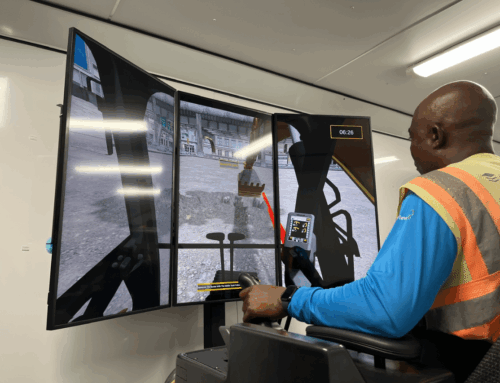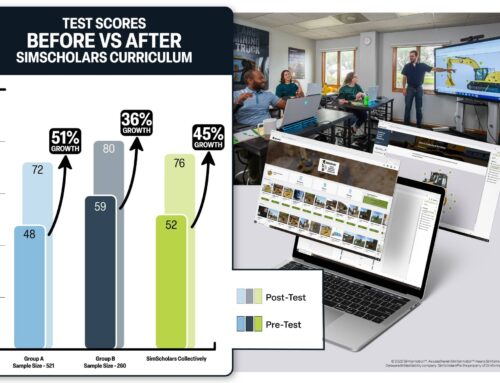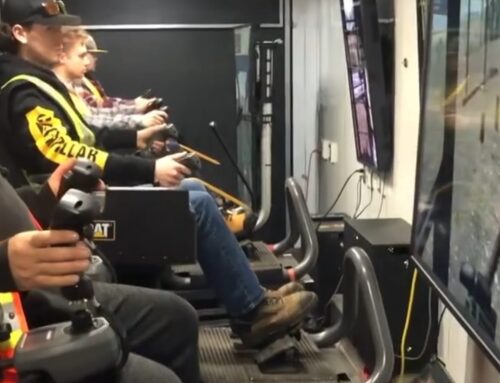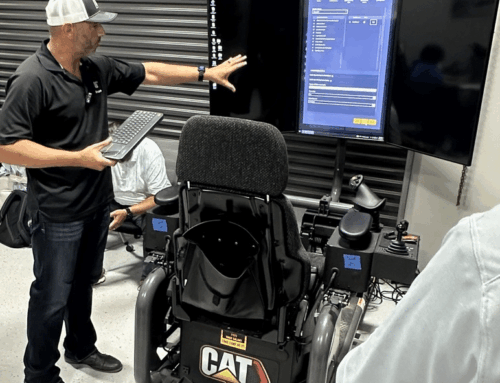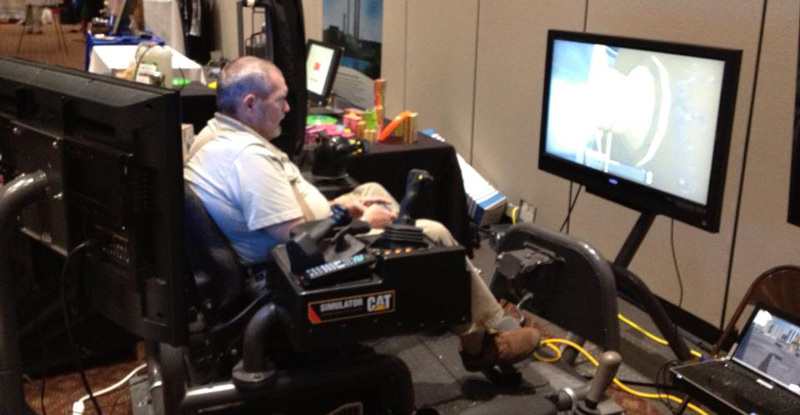
The Kentucky Safety Training Institute mobile training unit travels throughout the U.S. National Park System training personnel to be safer and more efficient heavy equipment operators.
Traveling to U.S. national parks for operator training is a unique experience. Don Webb Jr., PhD and Director of the Kentucky Safety Training Institute (KTSI), has been the man in charge of the traveling program since 2006. Webb Jr. serves as the director and lead instructor for heavy equipment operator safety training. Webb and fellow instructor, Professor Steven Greene, develops curriculum for customized safety training for industry and private sectors. He is an OSHA 30 and 10 instructor.
The Kentucky Safety Training Institute came into existence as a result of a request that was made by Mammoth Cave National Park in 1997. It was determined that the highest number of accidents in the Southeast region of the National Park Service (NPS) involved heavy equipment. Many of the region’s workers operated a variety of equipment and many times had long intervals where they were not required to operate. The variety of equipment, combined with no operations or refresher courses, and the lack of a pre-operation machine check contributed to the problem.
Since 1986, Southeast Kentucky Community and Technical College (SKCTC) has offered a 2-year heavy equipment operator training program. (Professor Steven Greene heads up that program.) The college was asked to develop training that would address the issue. Dr. Vic Adams, who now serves as the SKCTC Vice President, worked with the NPS to develop and deliver the initial trainings. The inaugural class was held on the Campus of SKCTC in Middlesboro, Ky. and was met with great success. The classes continued to be held at the same location until 2004 when it was determined that the classes would travel to the Parks in order to better serve more employees. The Kentucky Safety Training Institute (KSTI) was born out of this endeavor and continues to serve the National Park Service (NPS) as well as local and state governments, state parks and businesses throughout the U.S.
“When we first heard of availability of Cat® Simulators several years back, we were very interested in making them a part of our training. The simulators have traveled the country with us in our mobile simulator lab and have become an invaluable tool to our classes.”
—Don Webb, Jr., PhD, Director, Kentucky Safety Training Institute
Cat® Simulators are used in the SKCTC’s full-time operator program as well as the KSTI traveling program. The relationship of the KSTI with the NPS is unique. The national park’s Historic Preservation Training Center (HPTC) out of Fredrick, Md., contracts KSTI for training at locations around the U.S. The KSTI program trains on several machines including dozers, wheel loaders, backhoe, hydraulic excavator and motor grader.
The Kentucky Safety Training Institute mobile training unit travels throughout the U.S. National Park System training personnel to be safer and more efficient heavy equipment operators.
The program also covers man lifts, bucket trucks, trenching/shoring machines, ground workers, pre-operation machine walkarounds, emergency procedures, mower safety with both tractors and zero turn mowers, wood chippers and chain saws. Both programs offer Cat Simulator training on the M-Series Motor Grader, Large Wheel Loader, Hydraulic Excavator and Dozer Simulator Systems. In a 40-hour training class the trainees will typically get 6 to 8 hours of time on the simulators. Webb estimates he has reduced machine training by 30% with the use of Cat Simulators. He saves well over $15,000 a year in fuel costs by using simulator training. “When we first heard of availability of Cat Simulators several years back we were very interested in making them a part of our training. The simulators have traveled the country with us in our mobile simulator lab and have become an invaluable tool to our classes,” Webb says. KSTI’s main goals are to raise awareness about the dangers involved in operating heavy equipment and offer training to employees to mitigate and minimize those dangers. The park employees and other venues that KSTI’s program serves are always impressed and enjoy the virtual training. The simulators serve as a great introduction to non-operators, as well as a challenge to the experienced operators. “We have never had a class that has been disappointed in using the simulators, and many classes ask us if we would bring them when we return for future trainings,” he adds. Before KSTI incorporated Cat Simulators, they did not have the ability to demonstrate techniques and skills before the trainees were exposed to the hands-on field work. Being able to train with simulators allows instructors the opportunity to show trainees different techniques before they get on the actual machines. Plus there are no concerns about operating during bad weather with simulators.
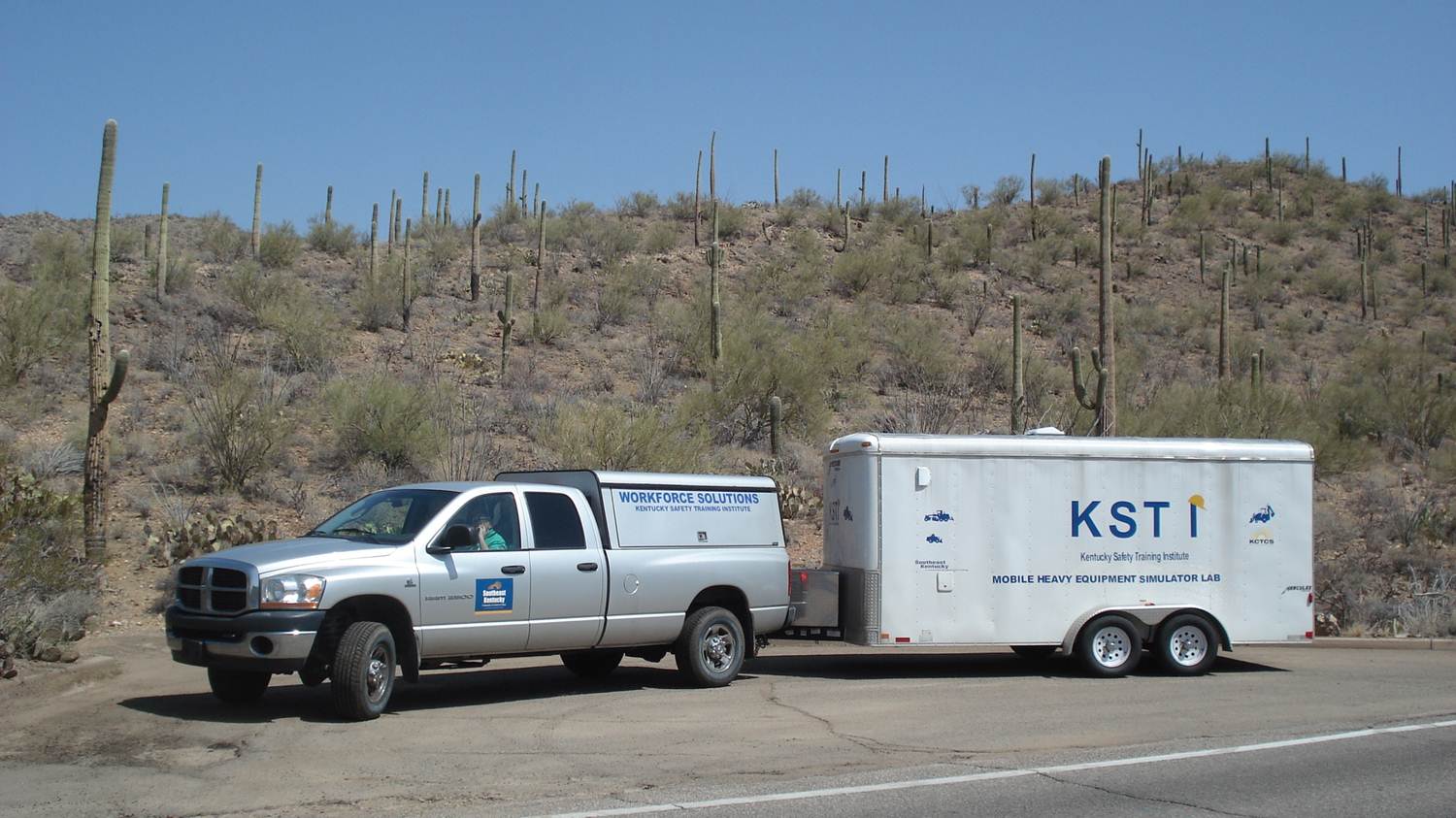
The Kentucky Safety Training Institute mobile training unit travels throughout the U.S. National Park System training personnel to be safer and more efficient heavy equipment operators.
The relationship of the Kentucky Safety Training Institute with the National Park System is unique. KSTI is contracted by the national parks Historic Preservation Training Center (HPTC) out of Fredrick, Md. “The curriculum for the National Park Heavy Equipment Operator Safety program was developed to suit the needs of the park employees and continues to evolve and change from park to park, as each park has a variety of equipment that they use,” says Webb. The agenda is determined prior to a class and then tailored to the individual park to better serve the location. The program combines lecture, audio, visual aids, simulators and hands-on field exercises. NPS employees range in age from early 20s to 70s. “We have male and female students in nearly every class. Around 50% have had little experience with equipment and the rest have had moderate to high levels of experience operating,” Webb explains. He goes on to say that over the years, the logistics of planning and implementing the classes and adapting them to the individual parks needs has become easier. The NPS Historic Preservation Training Center (HPTC) advertises class availability through its intranet and parks request the training. The word gets around among the NPS employees and they also request that the simulators be brought to their areas because they attended training with us at another park, or heard about the simulator training from another employee. Other advertising is done to municipalities and industries. Typically the team knows the location they will be visiting a couple months or so in advance. They will schedule conference calls to see what type of equipment is being used in the park, classroom availability, number of students, their experience level, what type of area is available for the hands-on portion of the training, and if actual ground engagement is possible. The traveling team has conducted as many as three 40 hour classes in different parts of the nation per month. They average 10 to 12 NPS classes annually.
Webb and Greene continue to travel with the program throughout the National Park System, training employees to be safer and more efficient operators.
CONTACT
sales@catsimulators.com
1.309.266.2640



